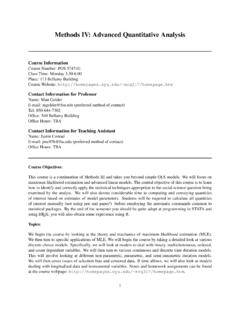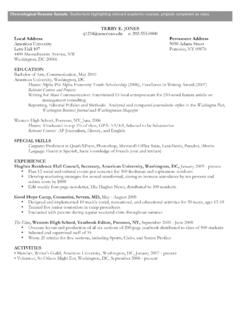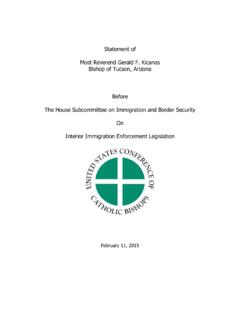Transcription of Parliamentary, Presidential and Semi-Presidential …
1 parliamentary , Presidential and Semi- Presidential Democracies Democracies are often classified according to the form of government that they have: parliamentary Presidential Semi- Presidential 12: parliamentary , Presidential , and Semi- Presidential Democracies Classifying parliamentary , Presidential , and Figure Semi- Presidential Democracies DEMOCRACIES. 1. Is the government responsible to the elected legislature? No: Yes: Presidential DEMOCRACIES 2. Is the head of state popularly elected for a fixed term in office? Yes: No: SEMI- Presidential parliamentary . Source: Cheibub, Gandhi, and Vreeland (2010). the various government departments. Legislative Legislative responsibility refers to a situ responsibility means that a legislative majority has the which a legislative majority has the constitut constitutional power to remove the government from power a vote of no confidence to remov Legislative responsibility refers to a situation in which a legislative majority has the constitutional power to remove a government from office without cause.
2 A vote of no confidence is initiated by the legislature the government must resign if it fails to obtain a legislative majority. A constructive vote of no confidence must indicate who will replace the government if the incumbent loses a vote of no confidence. A vote of no confidence is initiated by the legislature the government must resign if it fails to obtain a legislative majority. A constructive vote of no confidence must indicate who will replace the government if the incumbent loses a vote of no confidence. A vote of confidence is initiated by the government the government must resign if it fails to obtain a legislative majority. The defining feature of Presidential democracies is that they do not have legislative responsibility. US Government Shutdown, click here In contrast, parliamentary and semi- Presidential democracies both have legislative responsibility.
3 PM Question Time (UK), click here In addition to legislative responsibility, semi- Presidential democracies also have a head of state who is popularly elected for a fixed term. A head of state is popularly elected if she is elected through a process where voters either (i) cast a ballot directly for a candidate or (ii) they cast ballots to elect an electoral college, whose sole purpose is to elect the head of state. To serve a fixed term means that the head of state serves for a fixed period of time before she needs to be reappointed and cannot be removed in the meantime. In a democracy, the head of state is either a monarch or a president. Presidents can exist in Presidential , semi- Presidential , and parliamentary democracies. Monarchs only exist in parliamentary democracies they do not serve fixed terms and they are not directly elected. Presidential : Democracies in which the government does not depend on a legislative majority to exist are Presidential .
4 parliamentary : Democracies in which the government depends on a legislative majority to exist and in which the head of state is not popularly elected for a fixed term are parliamentary . Semi- Presidential : Democracies in which the government depends on a legislative majority to exist and in which the head of state is popularly elected for a fixed term are semi- Presidential . parliamentary , Presidential , and Semi- Presidential Map Democracies around the World in 2015. parliamentary , Presidential , and Semi- Presidential Table Democracies, 2015. parliamentary Presidential Semi- Presidential Albania, Andorra, Antigua and Argentina, Benin, Bolivia, Armenia, Austria, Barbuda, Australia, Bahamas, Brazil, Burundi, Chile, Bulgaria, Cape Verde, Barbados, Belgium, Belize, Bhutan, Colombia, Comoros, Costa Croatia, Czech Republic, Canada, Denmark, Dominica, Rica, Cyprus, Dominican Finland, France, Georgia, Estonia, Germany, Greece, Grenada, Republic, Ecuador, El Guinea-Bissau, Iceland, Guyana, Hungary, India, Israel, Italy, Salvador, Ghana, Ireland, Kyrgyzstan, Jamaica, Japan, Kiribati, Latvia, Guatemala, Honduras, Lithuania, Macedonia, Lesotho, Liechtenstein, Luxembourg, Indonesia, Kenya, Liberia, Madagascar, Mali, Malta, Marshall Islands, Mauritius, Malawi, Maldives, Mexico, Mongolia, Niger, Peru, Moldova, Nauru, Nepal, Netherlands, Micronesia, Nicaragua, Poland, Portugal, New Zealand, Norway, Pakistan.
5 Nigeria, Palau, Panama, Romania, S o Tom and Papua New Guinea, Samoa, Solomon Paraguay, Philippines, Pr ncipe, Senegal, Serbia, Islands, Spain, St. Kitts and Nevis, St. Sierra Leone, South Korea, Slovakia, Slovenia, Sri Lucia, St. Vincent and the Suriname, Switzerland, Lanka, Taiwan, Timor- Grenadines, Sweden, Thailand, United States, Uruguay, Leste, Tunisia, Turkey, Trinidad and Tobago, Tuvalu, United Venezuela Ukraine, Zambia Kingdom, Vanuatu Source: Data from Robert Elgie ( ) and various country constitutions. Countries considered to be dictatorships based on the criteria employed in the DD measure of regime type (see Chapter 5) are excluded. parliamentary Democracies The government in a parliamentary democracy comprises a prime minister and the cabinet. The prime minister is the political chief executive and head of the government. The cabinet is composed of ministers whose job it is to be in the cabinet and head the various government departments.
6 In a parliamentary democracy, the executive branch and the government are the same thing. Table Canadian Government in November 2015. Minister Department Minister Department Justin Trudeau Prime Minister/Minister of Marie-Claude Bibeau International Development Intergovernmental Affairs and and La Francophonie Youth James Gordon Carr Natural Resources Ralph Goodale Public Safety and Emergency M lanie Joly Canadian Heritage Preparedness Diane Lebouthillier National Revenue Lawrence MacAulay Agriculture and Agri-Food Kent Hehr Veterans Affairs / Associate St phane Dion Foreign Affairs Minister of National John McCallum Immigration, Refugees and Defence Citizenship Catherine McKenna Environment and Climate Carolyn Bennett Indigenous and Northern Affairs Change Scott Brison President of the Treasury Board Harjit Singh Sajjan National Defence Dominic LeBlanc Leader of the Government in MaryAnn Mihychuk Employment, Workforce the house of Commons Development and Labour Navdeep Bains Innovation.
7 Science and Amarjeet Sohi Infrastructure and Economic Development Communities William Francis Finance Maryam Monsef Democratic Institutions Morneau Carla Qualtrough Sport and Persons with Jody Wilson-Raybould Justice / Attorney General of Disabilities Canada Hunter Tootoo Fisheries and Oceans /. Judy Foote Public Services and Canadian Coast Guard Procurement Kirsty Duncan Science Chrystia Freeland International Trade Patricia L. Hajdu Status of Women Jane Philpott Health Bardish Chagger Small Business and Jean-Yves Duclos Families, Children and Social Tourism Development Marc Garneau Transport Ministerial responsibility refers to the constitutional doctrine by which cabinet ministers must bear ultimate responsibility for what happens in their ministry. Collective cabinet responsibility refers to the doctrine by which ministers must publicly support collective cabinet decisions or resign.
8 In a parliamentary democracy, voters do NOT elect governments. Instead, voters elect representatives, who then bargain over who should go into government. In a parliamentary democracy, voters do NOT elect governments. Instead, voters elect representatives, who then bargain over who should go into government. So, how do governments form? of legislators decides that this is what should happen. As a result, governments that come to power in parliamentary systems must always enjoy the implicit support of a legislative majority even if they never have to explicitly demonstrate this in an investiture vote or a vote of no confidence. Table West German Legislative Elections in 1987. Party Seats Percentage Christian Democrats (CDU/CSU) 223 Social Democrats (SPD) 186 Free Democrats (FDP) 46 Greens 42 Total 497 100. Notes: Data are from Adam Carr's webpage at The head of state presides over the government formation process and invests a government with the constitutional authority to take office.
9 The extent to which the head of state is actively involved in the actual bargaining varies from country to country. In some countries, the head of state is limited to simply swearing in the government proposed by party elites. These countries are characterized by free-style' bargaining. In some countries, the head of state chooses a particular politician a formateur to initiate the government formation process. A formateur is the person designated to form the government in a parliamentary democracy, and is often the PM designate. Only Greece and Bulgaria explicitly state how the formateur must be chosen. In some countries, the head of state is restricted to appointing an informateur. An informateur examines politically feasible coalitions and nominates a formateur. These countries are often constitutional monarchies. Despite the discretion of some heads of state, the first formateur is usually the leader of the largest legislative party.
10 Once the formateur is chosen, she has to put a cabinet together that is acceptable to a legislative majority. Since it is rare in a parliamentary democracy for a single party to control a legislative majority, the formateur must begin bargaining with other parties. Once a cabinet has been formed, the support of a legislative majority may or may not have to be demonstrated by a formal investiture vote. An investiture vote is a formal vote in the legislature to determine whether a proposed government can take office. If the investiture vote fails, then the government formation process starts again. If the investiture vote succeeds (or there is no investiture vote), then the head of state appoints the cabinet to office. The government is then free to rule until (i) it is defeated in a vote of no confidence or (ii) a new election is necessary. A caretaker government occurs when an election is called or when an incumbent government either resigns or is defeated in a vote of no confidence.











